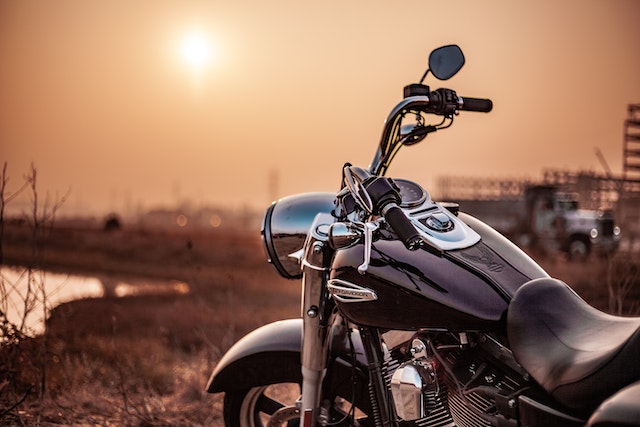
Riding a motorcycle can be an exhilarating experience, but when you have a passenger riding with you, it becomes even more important to prioritize safety. Riding two up requires careful coordination, proper communication, and adherence to safety guidelines to ensure an enjoyable and risk-free journey. In this article, we will explore essential safety tips for riding two up, covering everything from preparation to riding techniques and common challenges.
Motorcycle riding is a popular form of transportation and recreation, with many enthusiasts enjoying the thrill of hitting the open road. Riding two up refers to having a passenger on the motorcycle, typically seated behind the rider. It’s crucial to prioritize safety when riding two up to protect both the rider and the passenger from potential risks and dangerous motorcycle accidents.
1. Preparing for the Ride
Before embarking on a two-up journey, it’s essential to make the necessary preparations to ensure a safe and comfortable ride. Firstly, choose a motorcycle that is suitable for carrying a passenger. Ensure that the motorcycle is in good working condition by conducting a thorough inspection. Additionally, adjust the suspension and tire pressure to accommodate the extra weight of the passenger.
2. Safety Gear for Passengers
Both the rider and the passenger should wear appropriate safety gear. Helmets are essential for protecting the head and face in the event of an accident. Ensure that both helmets fit properly and meet safety standards. Additionally, passengers should wear protective clothing such as jackets, pants, and gloves made of durable and abrasion-resistant materials. Proper footwear is also crucial, with sturdy shoes or boots providing adequate protection for the passenger’s feet.
3. Communication and Coordination
Establishing clear communication signals between the rider and the passenger is vital for safe and coordinated riding. Before setting off, discuss and agree upon hand signals or a communication system to convey messages effectively during the ride. It’s also important to discuss riding preferences and expectations, ensuring both the rider and passenger are comfortable with the planned route and riding style.
4. Passenger Riding Position
Proper passenger riding position contributes to stability and comfort. Passengers should sit upright, avoiding sudden movements that could affect the motorcycle’s balance. They should keep their feet on the footrests and their hands on the rider’s waist or grab handles. Leaning with the rider while cornering helps maintain balance and improves overall stability.
5. Braking and Acceleration
Smooth and controlled braking is essential when riding two up. The rider should apply the brakes progressively, avoiding sudden or excessive pressure that could cause discomfort or loss of balance for the passenger. Similarly, gradual acceleration helps maintain stability and prevents the passenger from being jerked forward.
6. Cornering Techniques
Proper cornering techniques are crucial for safe and enjoyable rides. The rider should lean into the corner smoothly, and the passenger should lean with the rider, maintaining a balanced position. Coordination between the rider and the passenger is key to ensuring a seamless and controlled cornering experience.
7. Dealing with Road Conditions
Riding two up requires extra attention to road conditions. Uneven or slippery surfaces can pose challenges, so it’s important to anticipate and adjust riding techniques accordingly. Maintain a relaxed grip on the handlebars, allowing the motorcycle to maneuver smoothly. Be aware of potential hazards such as potholes, loose gravel, or oil spills, and navigate around them safely.
8. Maintaining Focus and Concentration
Avoiding distractions and maintaining focus on the road is crucial for safe riding. As the rider, stay alert and attentive to the surrounding traffic, road conditions, and potential hazards. Minimize distractions such as using electronic devices or engaging in conversations that could divert attention from the road. Many common motorcycle accidents tend to occur due to other vehicle’s not seeing motorcyclists, so be sure to pay attention and drive defensively.
9. Maintaining a Safe Distance
Maintaining a safe following distance from other vehicles is crucial when riding two up. As the rider, allow for additional stopping distance to compensate for the added weight and the passenger’s reaction time. Anticipate the rider’s movements and maintain a safe distance to ensure sufficient time to react to changing traffic conditions.
10. Be Mindful of Weight Distribution
Proper weight distribution is essential for maintaining the motorcycle’s stability and handling. Ensure that the load is evenly distributed between the rider and the passenger, considering the motorcycle’s weight capacity. A balanced weight distribution helps optimize handling and control, enhancing the overall safety of the ride.
While we hope for safe and incident-free rides, it’s essential to be prepared for unexpected situations. Accidents can happen, but taking certain precautions can minimize the impact and ensure everyone’s safety. Safety should always be a top priority when riding two up.
By following these safety tips, riders and passengers can enjoy the thrill of riding while minimizing risks. Proper preparation, communication, coordination, and adherence to safety guidelines contribute to a safe and enjoyable experience for both the rider and the passenger. So, gear up, stay informed, and ride responsibly.